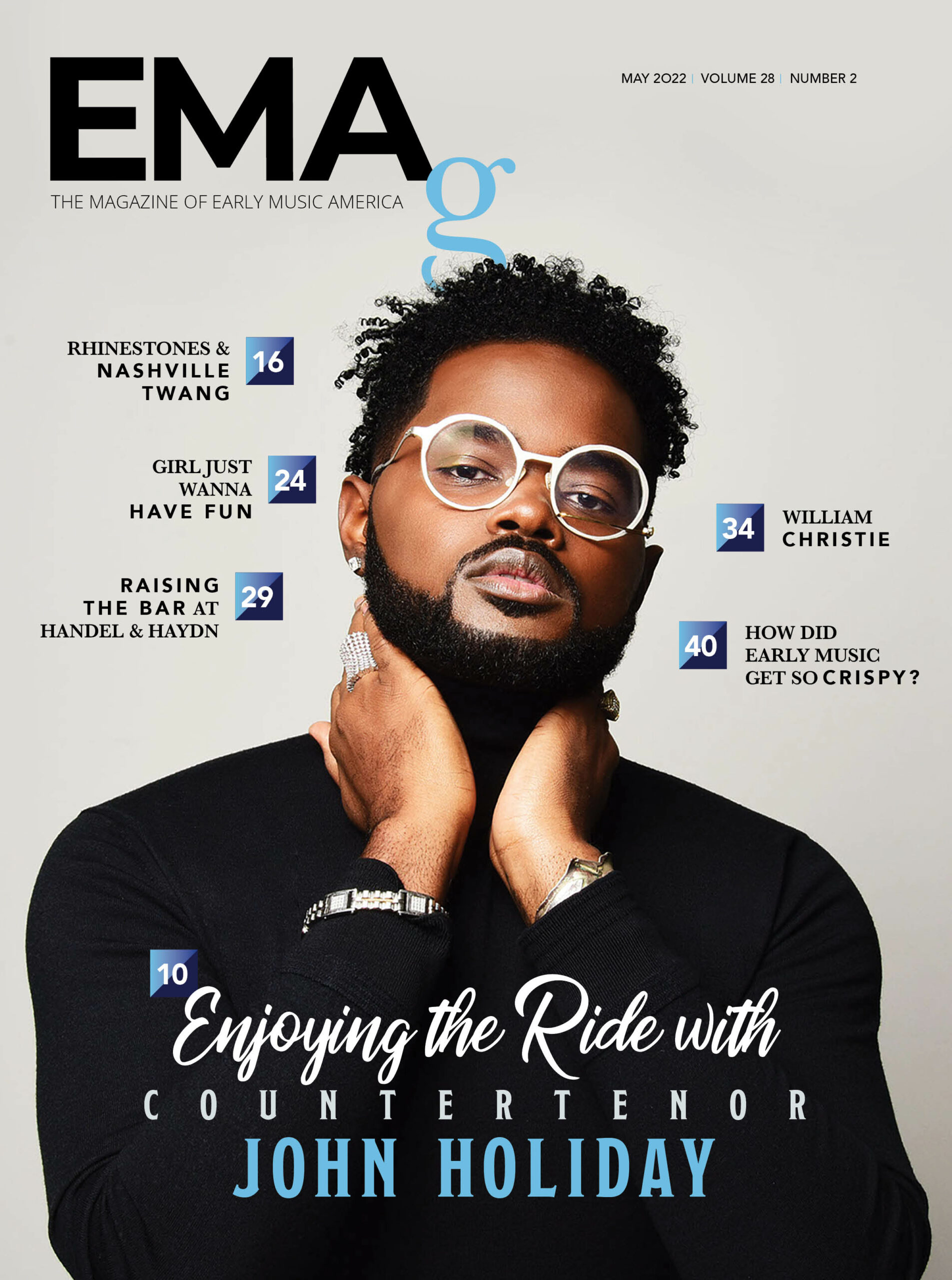
Included in the Full Issue
- William Christie on the American Scene by Thomas May
- Raising the Bar: Handel & Haydn in Transition by Aaron Keebaugh
- Exploring Music Across the Colonial Americas by Sophie Genevieve Lowe
- Ancient China and the T’ang Imperial Orchestras by Bo Lawergren
- From the Editor: Music That Connects Us
- From the Executive Director: More Than A Magazine
- EMA Courant – News from Around the Early Music Community
- CD & Book Reviews
- EMAg Puzzle by Joshua Kosman
- Musings: The Good Old Days are Back by Thomas Forrest Kelly
Current EMA members can read this and previous issues of EMAg.
Please login or become a member today!
Features
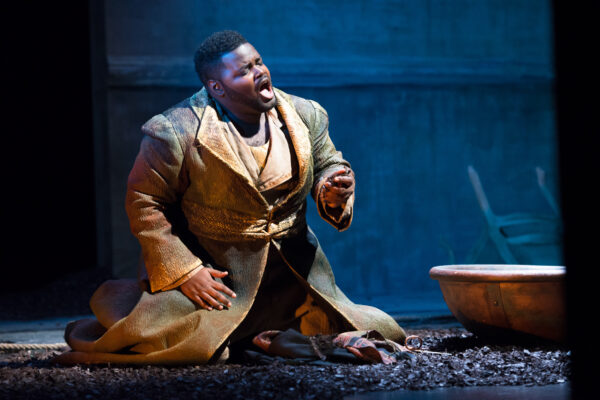
Enjoying the Ride with Countertenor John Holiday
The countertenor’s commitment to early music remains solid, even as the larger entertainment world has discovered his unique talents. You sense that Holiday’s intense desire to communicate informs his cabaret act as much as his Baroque opera.
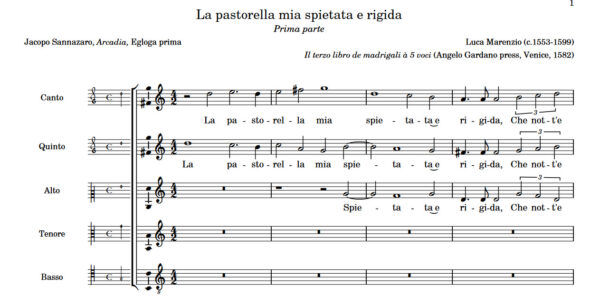
Art of the Amateur: A Computer Programmer Uploads a Lifetime of Renaissance Music
If you’ve ever sung or played a madrigal from an edition on IMSLP, you’ve probably engaged with the work of Allen Garvin, whose International Music Score Library Project corpus surpassed two thousand uploads last year.
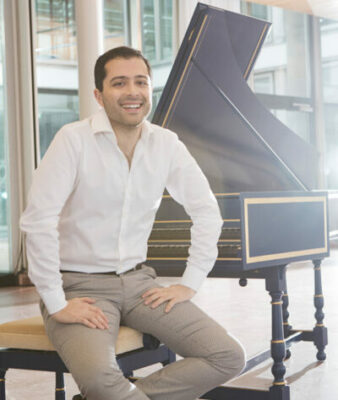
How Did Early Music Get So ‘Crispy’?
Like playing bingo, you can find “crisp” in countless early-music reviews, although such a term isn’t found in the historical record. Are musicians looking for uniformly “crisp” playing while neglecting other sonic possibilities? What’s going on here?
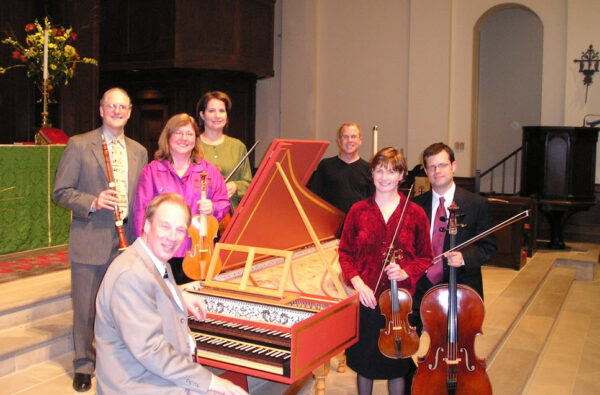
Rhinestones & Nashville Twang
The versatility of Nashville’s historically informed musicians has made them flexible, even delightfully heretical, in their approach to performing early music. It’s a scene that has been ebbing, flowing, and growing for nearly 20 years.
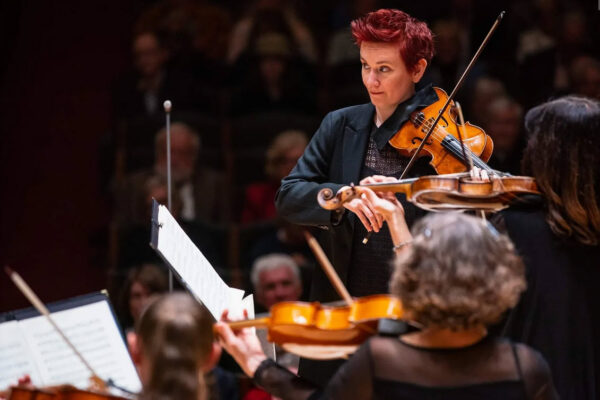
Girl Just Wanna Have Fun
With pop-star flair, violinist Aisslinn Nosky has shown vitality across her career. For her latest high-profile project, a complete Mozart violin concerto cycle, she traveled through rarely performed Haydn—an unusual journey for most violinists, but in perfect keeping with the H&H approach.
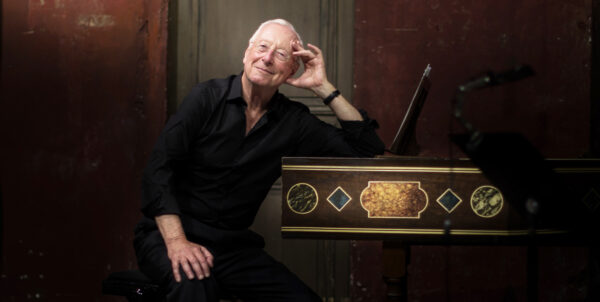
William Christie on the American Scene
In February, William Christie came to New York as part of his annual residency with the Juilliard School’s Historical Performance program. He noticed a sea change in attitude on the American scene toward the study of historically informed practice.
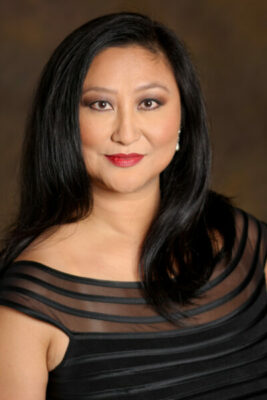
Canto: Imagine East and West in Song
We can start to envision a world where ancient music from opposite sides of the globe co-exists on a program, creating and exploring a new definition for historically informed performances. Allowing ourselves to explore different aural palettes enriches us. When we learn about and understand different cultures with open hearts and minds, we begin to appreciate one another.

